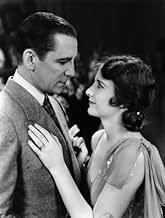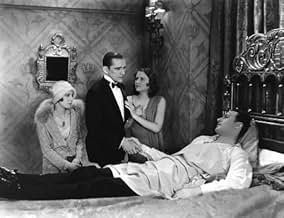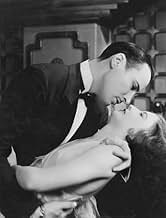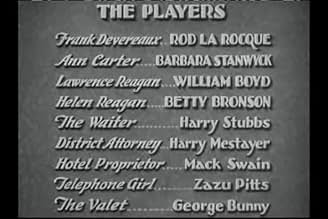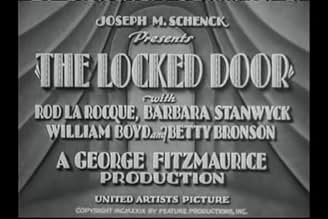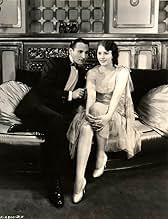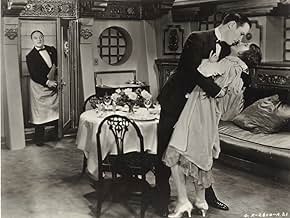AVALIAÇÃO DA IMDb
6,0/10
642
SUA AVALIAÇÃO
Adicionar um enredo no seu idiomaOn her first anniversary, Ann Reagan finds that her sister-in-law is involved with a shady character from her own past, and determines to intervene.On her first anniversary, Ann Reagan finds that her sister-in-law is involved with a shady character from her own past, and determines to intervene.On her first anniversary, Ann Reagan finds that her sister-in-law is involved with a shady character from her own past, and determines to intervene.
- Direção
- Roteiristas
- Artistas
Zasu Pitts
- Telephone Girl
- (as Zazu Pitts)
Mary Ashcraft
- Girl on Rum Boat
- (não creditado)
Violet Bird
- Girl on Rum Boat
- (não creditado)
Earle Browne
- Bit Part
- (não creditado)
Clarence Burton
- Police Officer
- (não creditado)
Lita Chevret
- Girl on Rum Boat
- (não creditado)
Gilbert Clayton
- Bit Part
- (não creditado)
Pauline Curley
- Bit Part
- (não creditado)
Edgar Dearing
- Cop
- (não creditado)
Edward Dillon
- Bit Part
- (não creditado)
Avaliações em destaque
The attraction here is not just Barbara Stanwyck, even though it's her first talkie and she handles her role with a secure professionalism that belies her cinematic inexperience. Born for the camera she was! But an equally impressive performance is delivered by Rod La Rocque as the serial cad who mistreats her and then sets his sights on her younger sister. The trappings are typical 20's soap opera/melodrama, in this case derived from a stage play. But not typical for the era is La Rocque's well-tailored villain who seems to have stepped out of a story from a much later era; in fact, his performance would not be considered one bit dated even by today's standards - highly unusual for a film from 1929. His line readings and body language bespeak a decadent, spoiled rogue without a scintilla of conscience, all of this enhanced by delicately tapered sideburns. He also has a smooth, deep speaking voice. The look and style of the film are standard for the era but include an interesting, lively panoramic dance party sequence on a "drinking boat" (pleasure boats that sailed outside the 12-mile limit of the US coast so the patrons could drink alcohol illegally during the Prohibition era) intercut with an intimate scene between Stanwyck and La Rocque in one of the cabins.
Other comments mention some innovative camera work in this film, but what you'll remember first is the stiff, stagy acting. And yet, you'll keep watching right up to the ridiculous deus-ex-machina ending because the movie isn't terrible enough to make you turn it off. And there are some points of interest.
One, oddly enough, is the set. Devereaux's bachelor pad has Gothic architectural details worthy of Dracula's castle. Funny that as a playboy with no visible means of support (blackmail, perhaps), he should be able to afford such a magnificent place.
Another would be Barbara Stanwyck with a horrendous 1920's hairdo, overacting like she probably never did again. I never believed that she would be so much in love with a husband who looks twice her age and has all the passion and animation of a dead codfish.
Another would be the villain of the piece, played by Rod La Roque as the ultimate lounge lizard with the a perfectly sleazy pencil-thin mustache and a leering, mocking manner to match. But I believed all that far more than I believed his change of heart at the end.
And finally, standing out like a beacon among the minor players, is Zazu Pitts as the ditsy switchboard operator. Very funny.
One, oddly enough, is the set. Devereaux's bachelor pad has Gothic architectural details worthy of Dracula's castle. Funny that as a playboy with no visible means of support (blackmail, perhaps), he should be able to afford such a magnificent place.
Another would be Barbara Stanwyck with a horrendous 1920's hairdo, overacting like she probably never did again. I never believed that she would be so much in love with a husband who looks twice her age and has all the passion and animation of a dead codfish.
Another would be the villain of the piece, played by Rod La Roque as the ultimate lounge lizard with the a perfectly sleazy pencil-thin mustache and a leering, mocking manner to match. But I believed all that far more than I believed his change of heart at the end.
And finally, standing out like a beacon among the minor players, is Zazu Pitts as the ditsy switchboard operator. Very funny.
Barbara Stanwyck stars as Ann Carter, recently married to Lawrence Reagan (William Boyd). Their matrimonial bliss is disturbed by the appearance of Frank Devereaux (Rod La Rocque), a sleazy cad and serial womanizer who shared an embarrassing incident with Ann a year ago. When Ann learns that Devereaux has designs on Lawrence's young sister Helen (Betty Bronson), she decides to meet with Devereaux and try to keep him away from the young girl. This leads to scandal and tragedy.
Stanwyck was only 22 here, and this is her first starring role (she appeared as an uncredited showgirl in 1927's Broadway Nights). She's cute with dark hair and a baby face, and she's already exhibiting her star appeal. The Pre-Code story elements include traveling to an offshore "rum boat" (where a young Paulette Goddard is supposedly among the extras), implied forced sex, and Stanwyck spending a bit of screentime in a torn dress. La Rocque steals the film, though, as the dapper skirt-chaser who stays one step ahead of the cuckolded husbands left in his wake. He's detestable and funny at the same time.
This does show its early talkie roots though, with a dying scene that is so prolonged and talkie I'm surprised those surrounding the dying man don't start looking for a blunt instrument to end things. The overall effort is OK, but then again - Joe Schenck cut Buster Keaton loose to concentrate on films like this??? I guess you had to be there.
Stanwyck was only 22 here, and this is her first starring role (she appeared as an uncredited showgirl in 1927's Broadway Nights). She's cute with dark hair and a baby face, and she's already exhibiting her star appeal. The Pre-Code story elements include traveling to an offshore "rum boat" (where a young Paulette Goddard is supposedly among the extras), implied forced sex, and Stanwyck spending a bit of screentime in a torn dress. La Rocque steals the film, though, as the dapper skirt-chaser who stays one step ahead of the cuckolded husbands left in his wake. He's detestable and funny at the same time.
This does show its early talkie roots though, with a dying scene that is so prolonged and talkie I'm surprised those surrounding the dying man don't start looking for a blunt instrument to end things. The overall effort is OK, but then again - Joe Schenck cut Buster Keaton loose to concentrate on films like this??? I guess you had to be there.
Someone referred to this as "stagy," and was more correct than perhaps he knew: "The Locked Door" was originally a stage play, and this movie was an adaptation, a good one in my opinion.
C. Gardner Sullivan had been writing scenarios and inter-titles since at least 1912, and is honored among aficionados who know his work from those earliest years of motion pictures.
The four top-billed players were also veterans, except for Barbara Stanwyck who has only one previous credit.
Rod La Rocque had been in movies since at least 1914, and put in 12 more years.
Betty Bronson became a huge star with her seventh role, Peter Pan in the movie of that name, and reportedly was chosen for the part by James M. Barrie, the author, himself.
William Boyd, known here at IMDb as "William 'Stage' Boyd," is the primary reason the Screen Actors Guild usually forbids a member having the same name as another, Harrison Ford being the only exception that comes immediately to my mind.
This particular Boyd was busted on something shameful and the picture of "the other" William Boyd, who later became very famous as Hopalong Cassidy, was published in a newspaper, almost destroying his career.
In this cast there are lots of "withs" who help make this a very good movie, including Mack Swain and Zasu Pitts.
The story is not really a mystery, at least not to us, because we see everything that happens, but it is a drama, with conflict and character change.
I'm reminded of the aphorism that people in small towns buy their local paper not to see who did what, because everyone knows, but to see who gets blamed.
That's the premise of this story, and it's well done, plausible by the standards of its time.
There is also a good point for modern society: Laws against consensual acts, such as gambling or ingestion of certain substances, in this case, alcohol, cause more problems than they solve.
"The Locked Door" is good cinema, especially for anyone who wants to watch the evolution of the art.
C. Gardner Sullivan had been writing scenarios and inter-titles since at least 1912, and is honored among aficionados who know his work from those earliest years of motion pictures.
The four top-billed players were also veterans, except for Barbara Stanwyck who has only one previous credit.
Rod La Rocque had been in movies since at least 1914, and put in 12 more years.
Betty Bronson became a huge star with her seventh role, Peter Pan in the movie of that name, and reportedly was chosen for the part by James M. Barrie, the author, himself.
William Boyd, known here at IMDb as "William 'Stage' Boyd," is the primary reason the Screen Actors Guild usually forbids a member having the same name as another, Harrison Ford being the only exception that comes immediately to my mind.
This particular Boyd was busted on something shameful and the picture of "the other" William Boyd, who later became very famous as Hopalong Cassidy, was published in a newspaper, almost destroying his career.
In this cast there are lots of "withs" who help make this a very good movie, including Mack Swain and Zasu Pitts.
The story is not really a mystery, at least not to us, because we see everything that happens, but it is a drama, with conflict and character change.
I'm reminded of the aphorism that people in small towns buy their local paper not to see who did what, because everyone knows, but to see who gets blamed.
That's the premise of this story, and it's well done, plausible by the standards of its time.
There is also a good point for modern society: Laws against consensual acts, such as gambling or ingestion of certain substances, in this case, alcohol, cause more problems than they solve.
"The Locked Door" is good cinema, especially for anyone who wants to watch the evolution of the art.
Handsome but oily playboy Rod La Rocque (as Frank Devereaux) takes secretary Barbara Stanwyck (as Ann Carter) on a Prohibition-era cruise aboard a boozy gambling boat. He locks their cabin door for dinner and sex, but a police raid saves Ms. Stanwyck from date rape. Eighteen months later, Stanwyck has happily married well-heeled William Boyd (as Lawrence "Larry" Reagan). Then, Stanwyck is shocked to discover Mr. La Rocque is charming cute sister-in-law Betty Bronson (Helen). Stanwyck wants La Rocque to hit the road without Ms. Bronson, so he threatens to reveal her participation on the opening cruise.
Director George Fitzmaurice does his best maneuvering everyone around the early sound-equipped stages.
Viewers in 1929 likely remembered the original "The Sign on the Door" (1921) starring Norma Talmadge and Lew Cody in the Stanwyck and La Rocque roles; this film survives, but has not been released. La Rocque, a popular cad, and perky "Peter Pan" star Bronson were likely the main draws in this "All Talking!" re-make. Now, it's seen as the first big role for Stanwyck. Unafraid to repeatedly show her underwear, Stanwyck is bold but inexperienced. Bronson measures theatrical. La Rocque is at his smarmy best, and Mr. Boyd lends good support. Telephone operator Zasu Pitts and dumb waiter Harry Stubbs provide comic relief.
***** The Locked Door (11/16/29) George Fitzmaurice ~ Barbara Stanwyck, Rod La Rocque, William 'Stage' Boyd, Betty Bronson
Director George Fitzmaurice does his best maneuvering everyone around the early sound-equipped stages.
Viewers in 1929 likely remembered the original "The Sign on the Door" (1921) starring Norma Talmadge and Lew Cody in the Stanwyck and La Rocque roles; this film survives, but has not been released. La Rocque, a popular cad, and perky "Peter Pan" star Bronson were likely the main draws in this "All Talking!" re-make. Now, it's seen as the first big role for Stanwyck. Unafraid to repeatedly show her underwear, Stanwyck is bold but inexperienced. Bronson measures theatrical. La Rocque is at his smarmy best, and Mr. Boyd lends good support. Telephone operator Zasu Pitts and dumb waiter Harry Stubbs provide comic relief.
***** The Locked Door (11/16/29) George Fitzmaurice ~ Barbara Stanwyck, Rod La Rocque, William 'Stage' Boyd, Betty Bronson
Você sabia?
- CuriosidadesOther than one bit part, this is Barbara Stanwyck's feature film debut.
- Citações
Frank Devereaux: Shoot yourself in the head, and if you live, you can become a Waiter.
- ConexõesFeatured in Visions of Light (1992)
- Trilhas sonorasI've Got a Feeling I'm Falling
(uncredited)
Written by Fats Waller and Harry Link
First tune played on the boat
Principais escolhas
Faça login para avaliar e ver a lista de recomendações personalizadas
- How long is The Locked Door?Fornecido pela Alexa
Detalhes
- Tempo de duração
- 1 h 14 min(74 min)
- Cor
- Proporção
- 1.20 : 1
Contribua para esta página
Sugerir uma alteração ou adicionar conteúdo ausente

